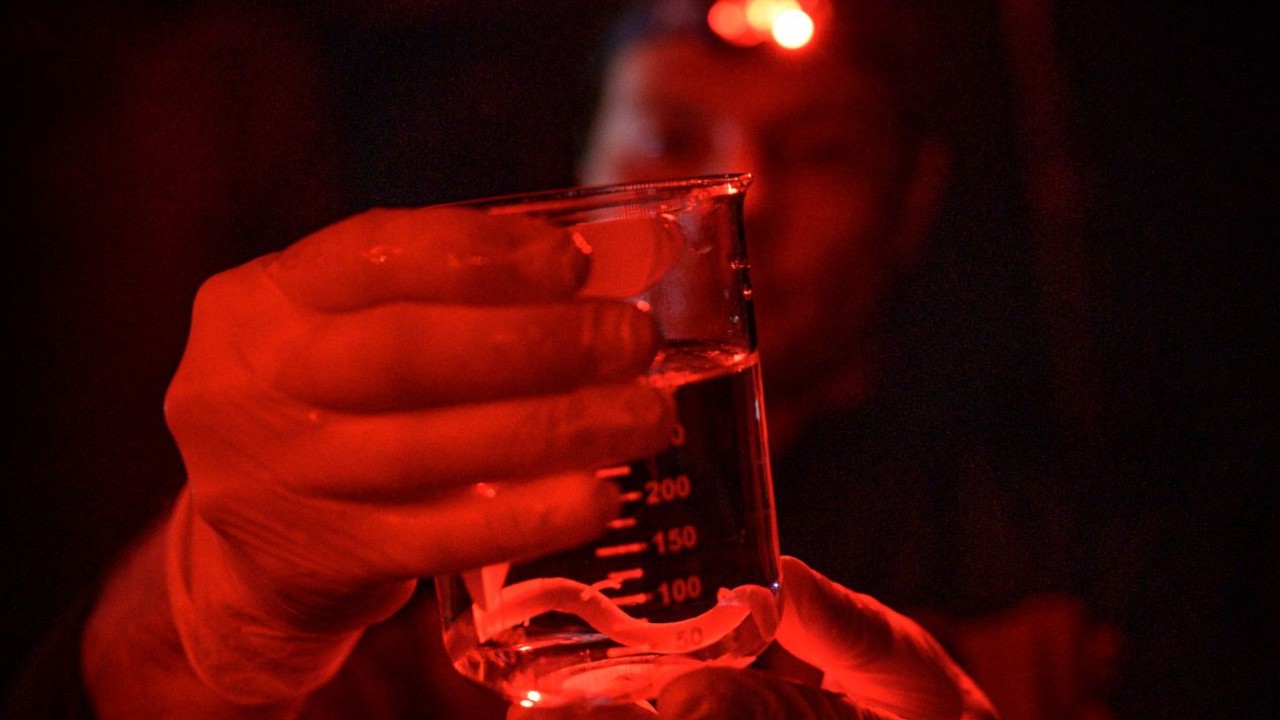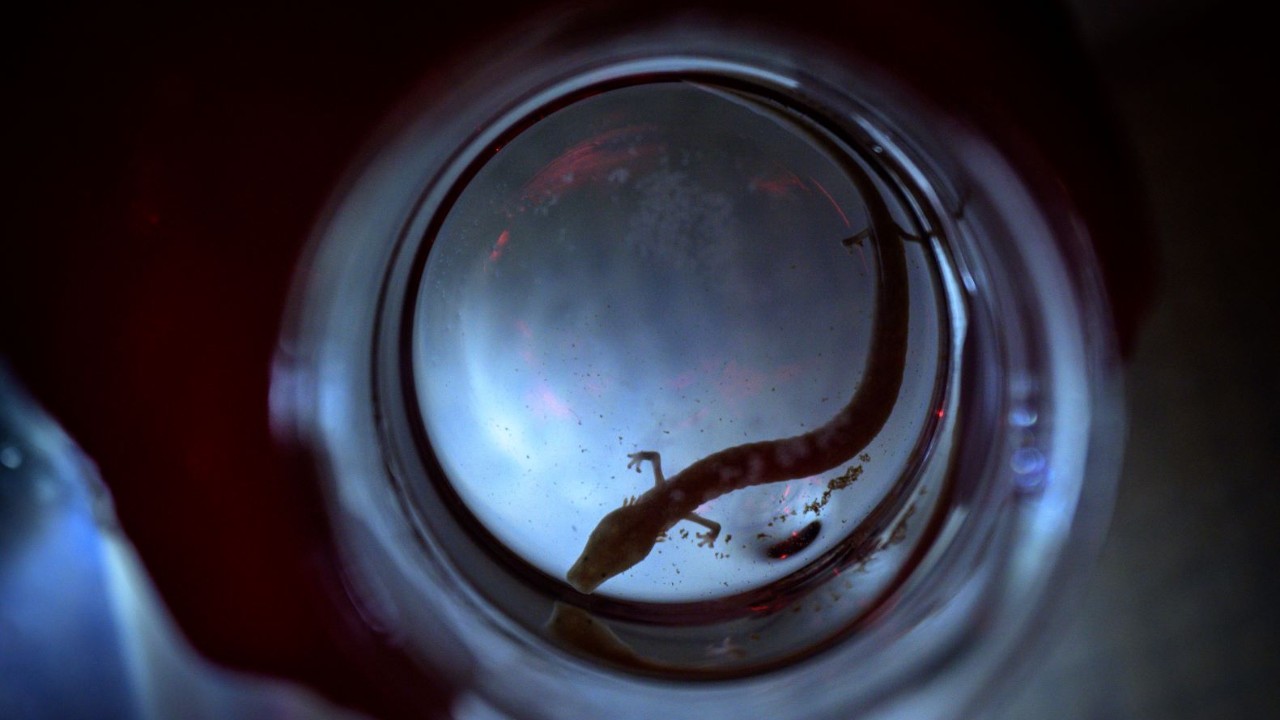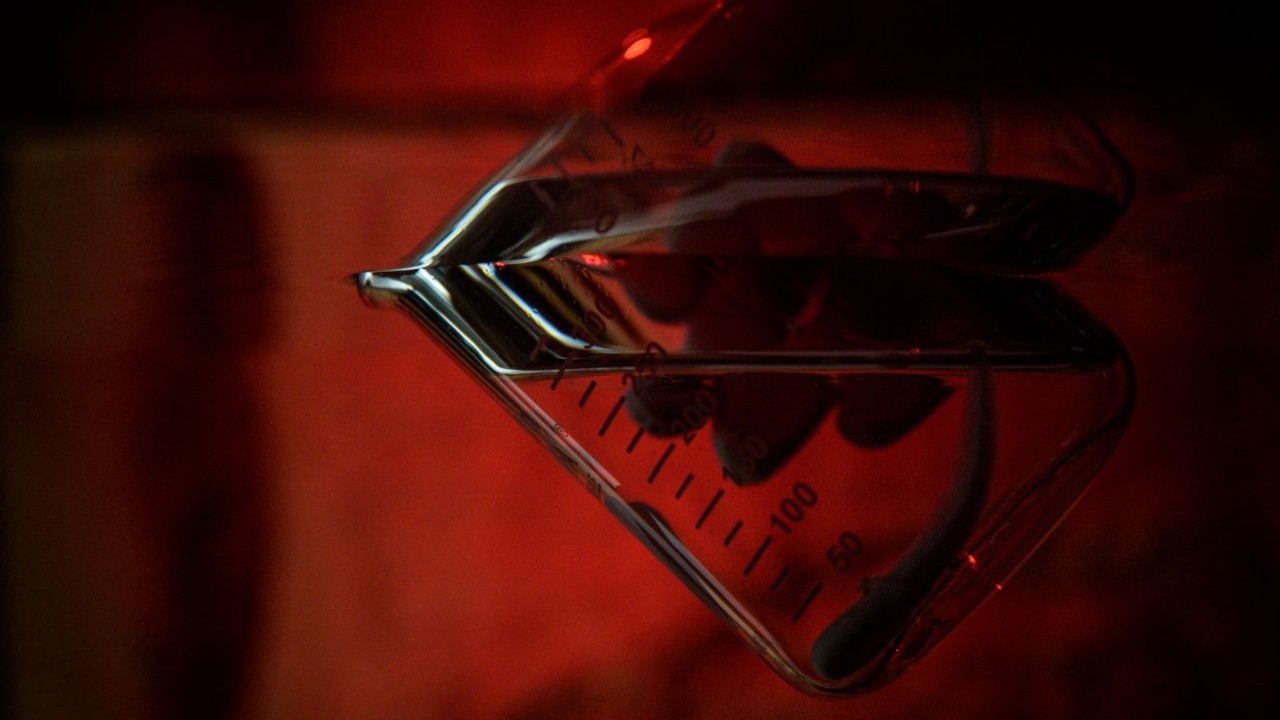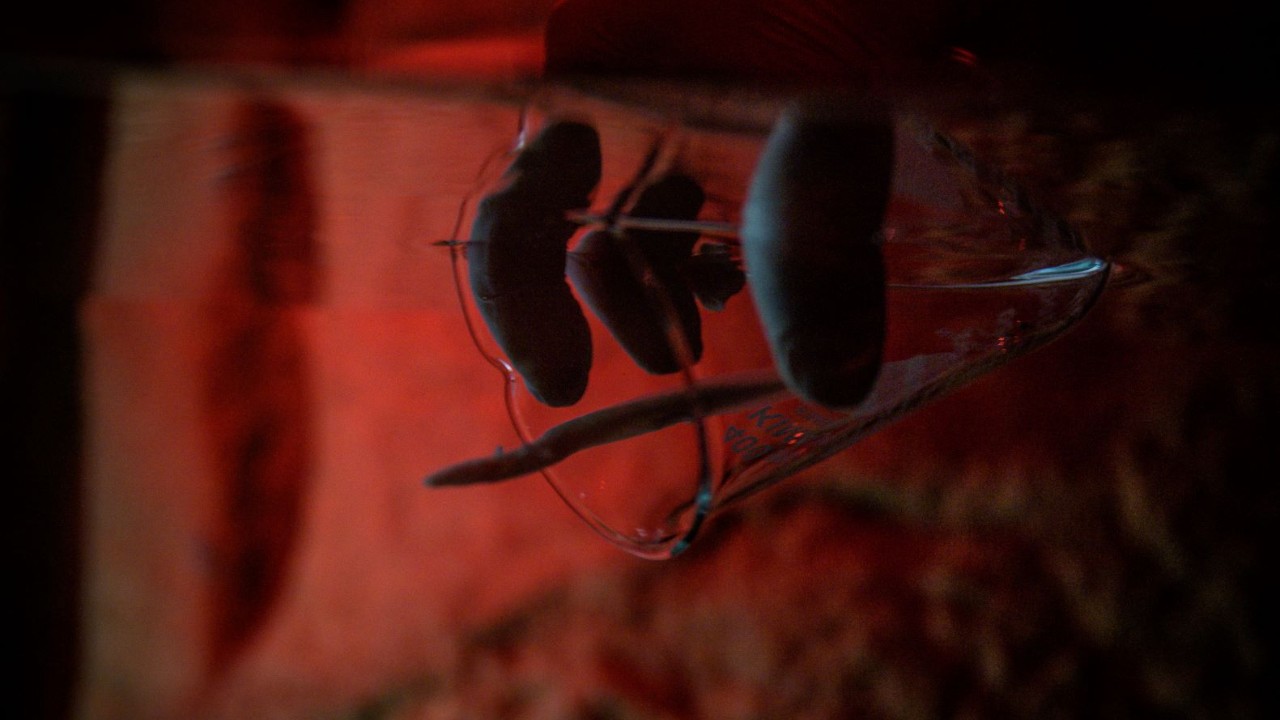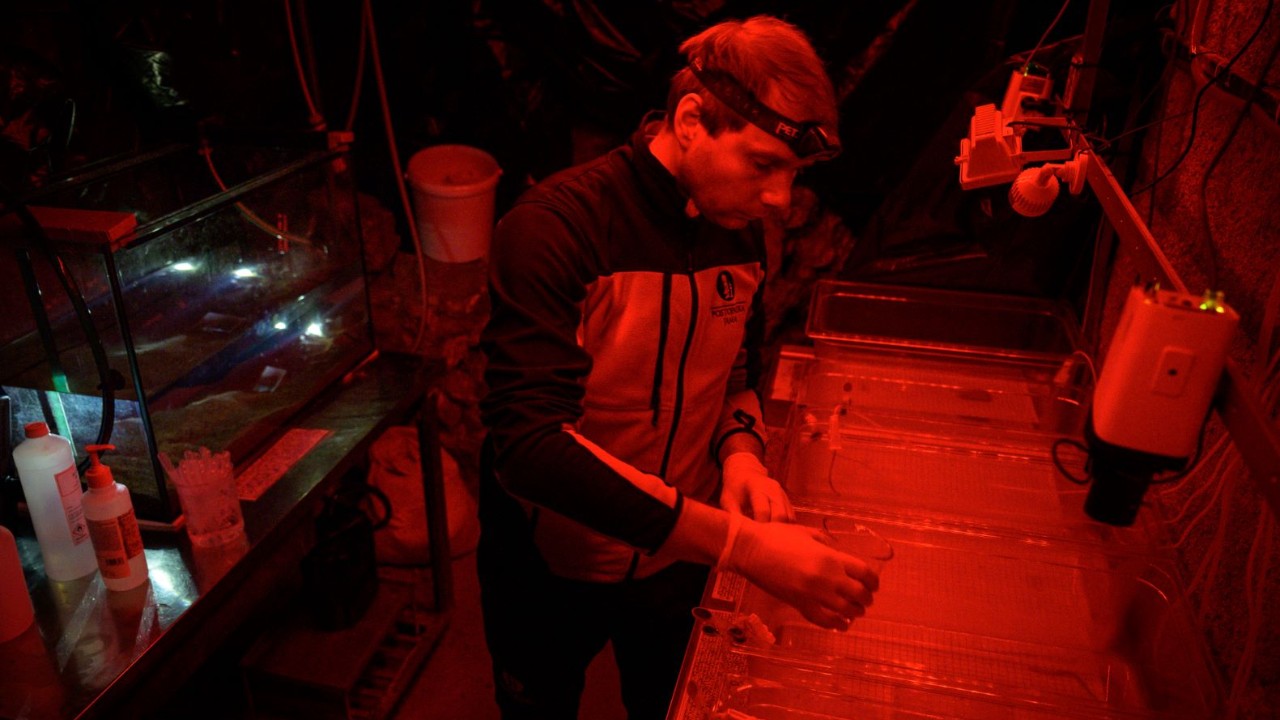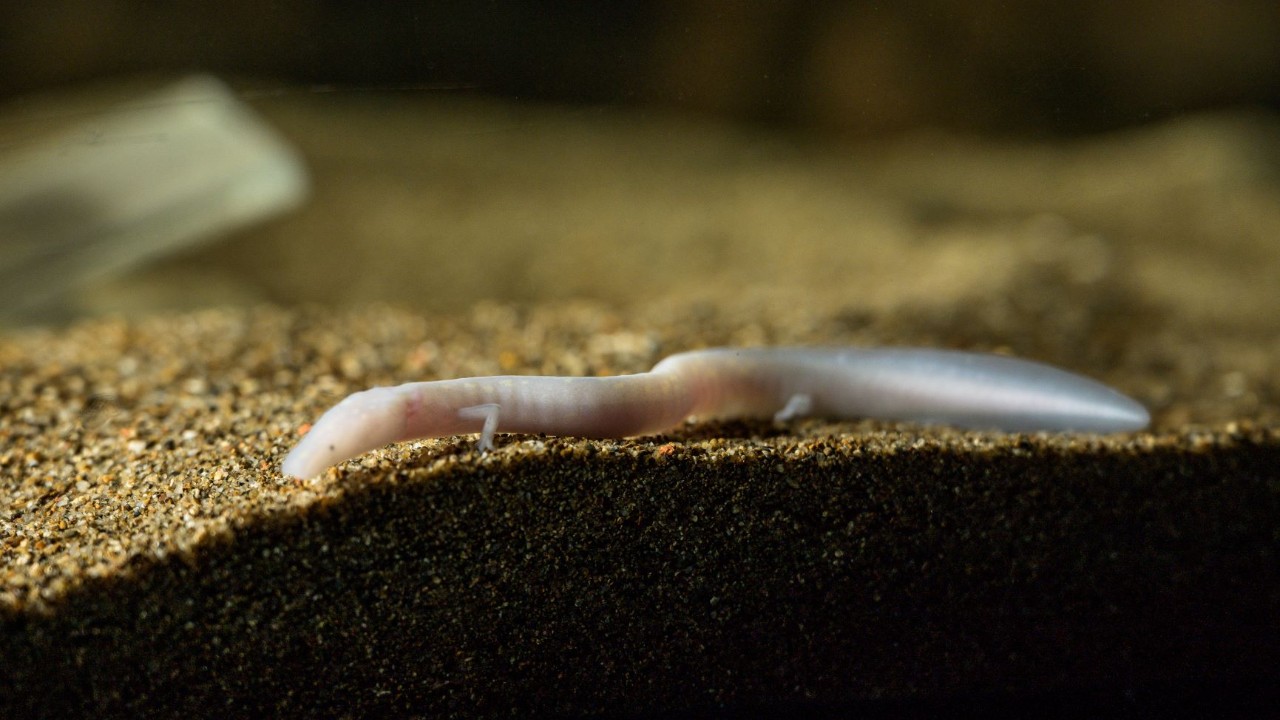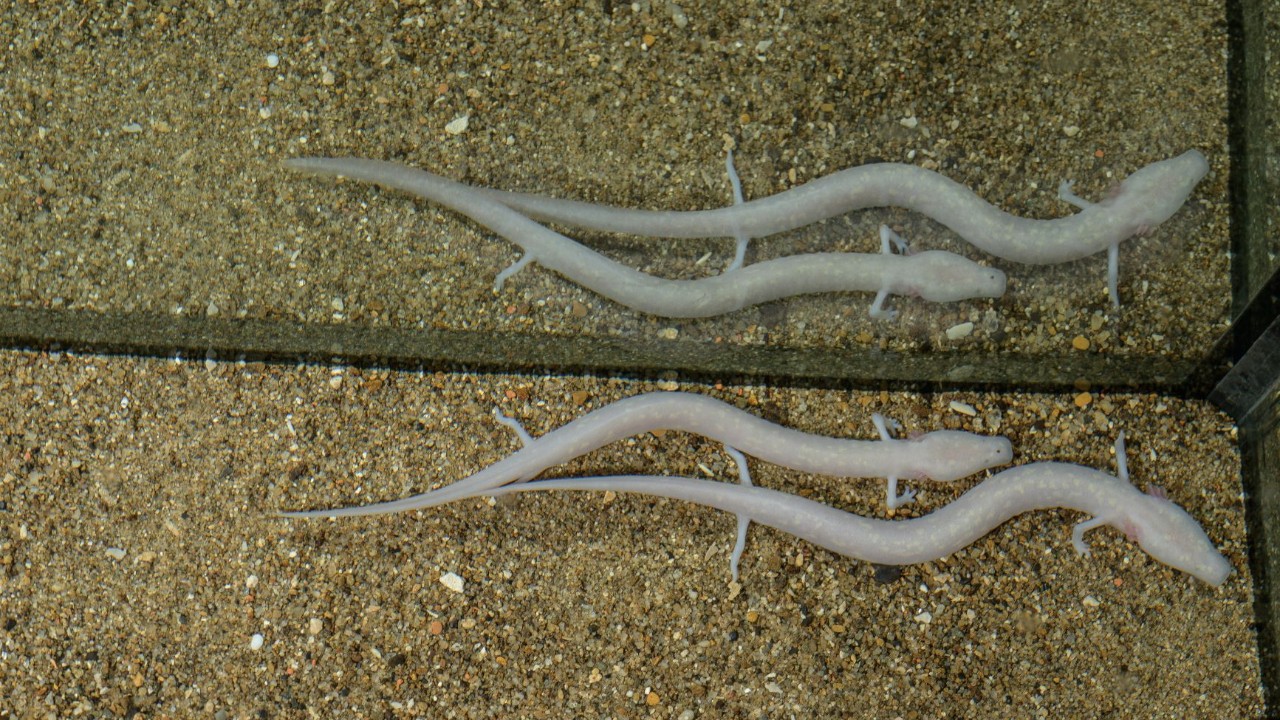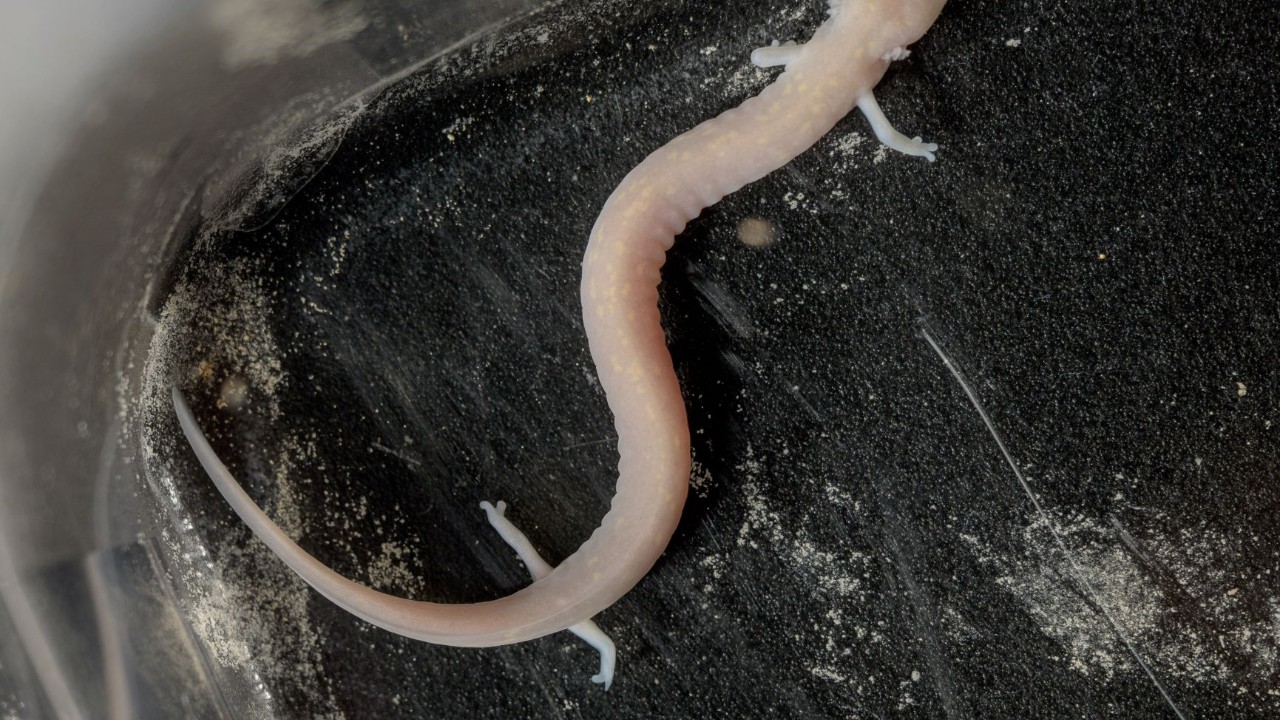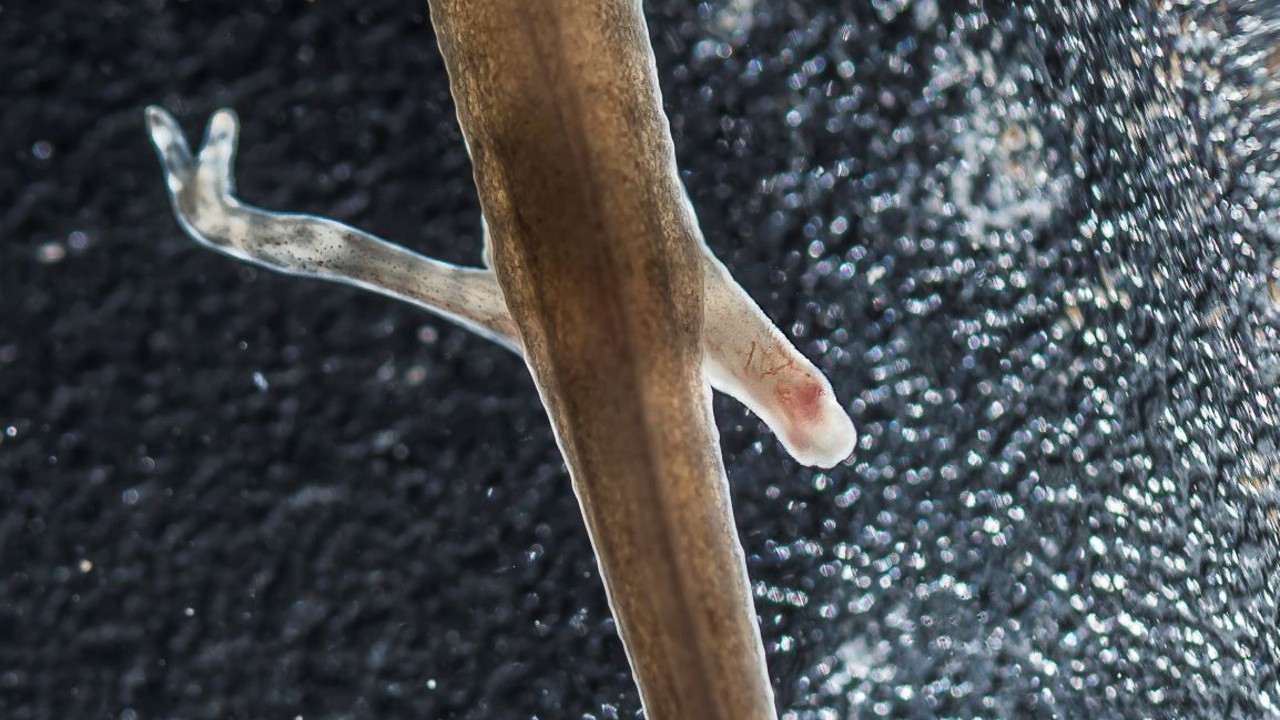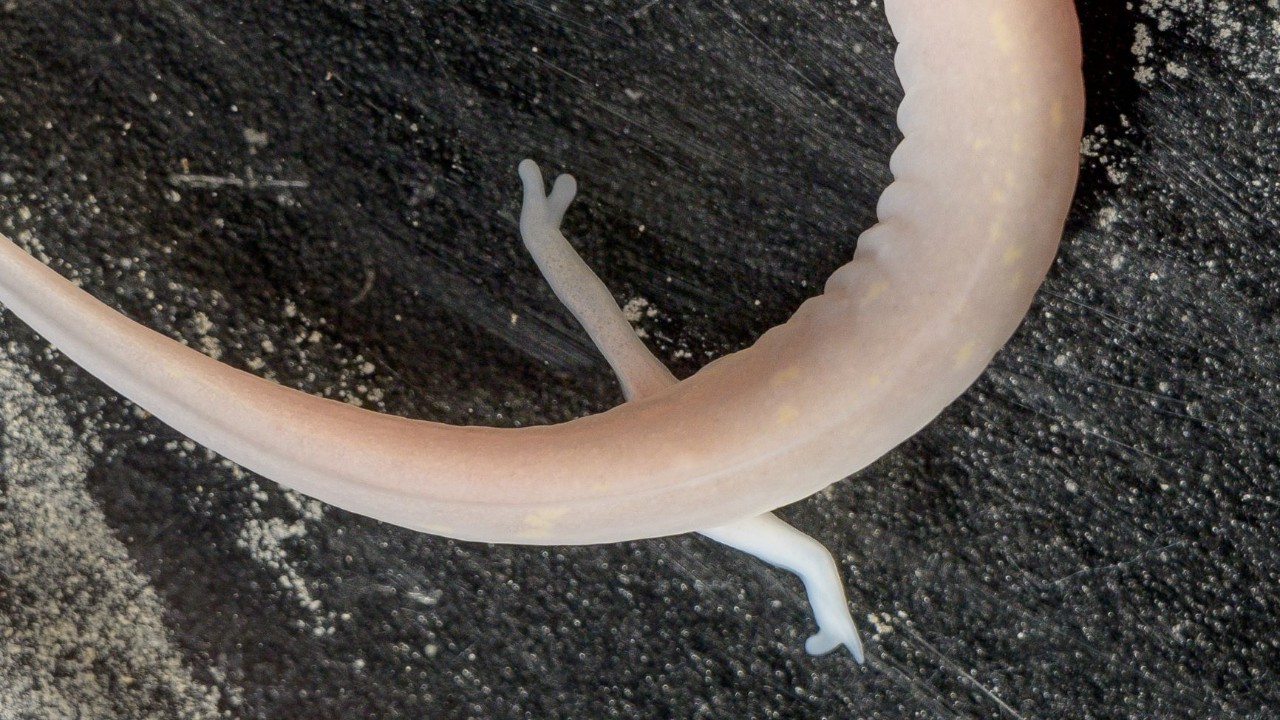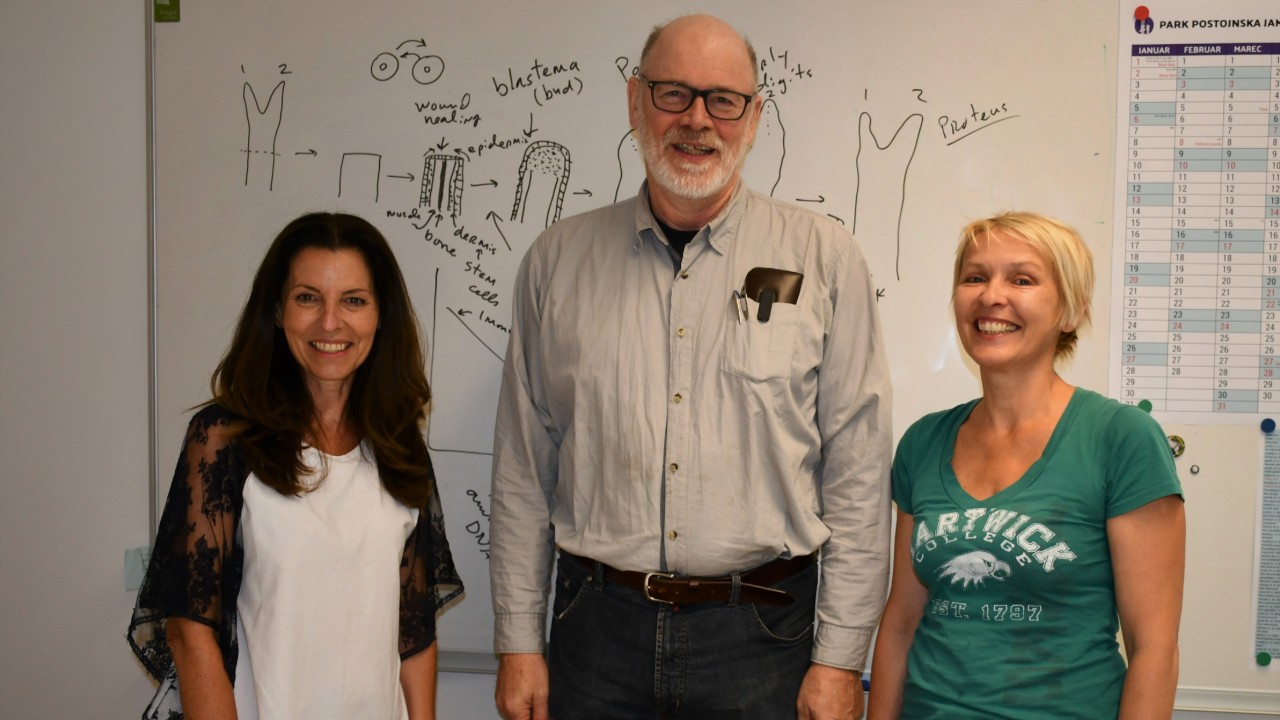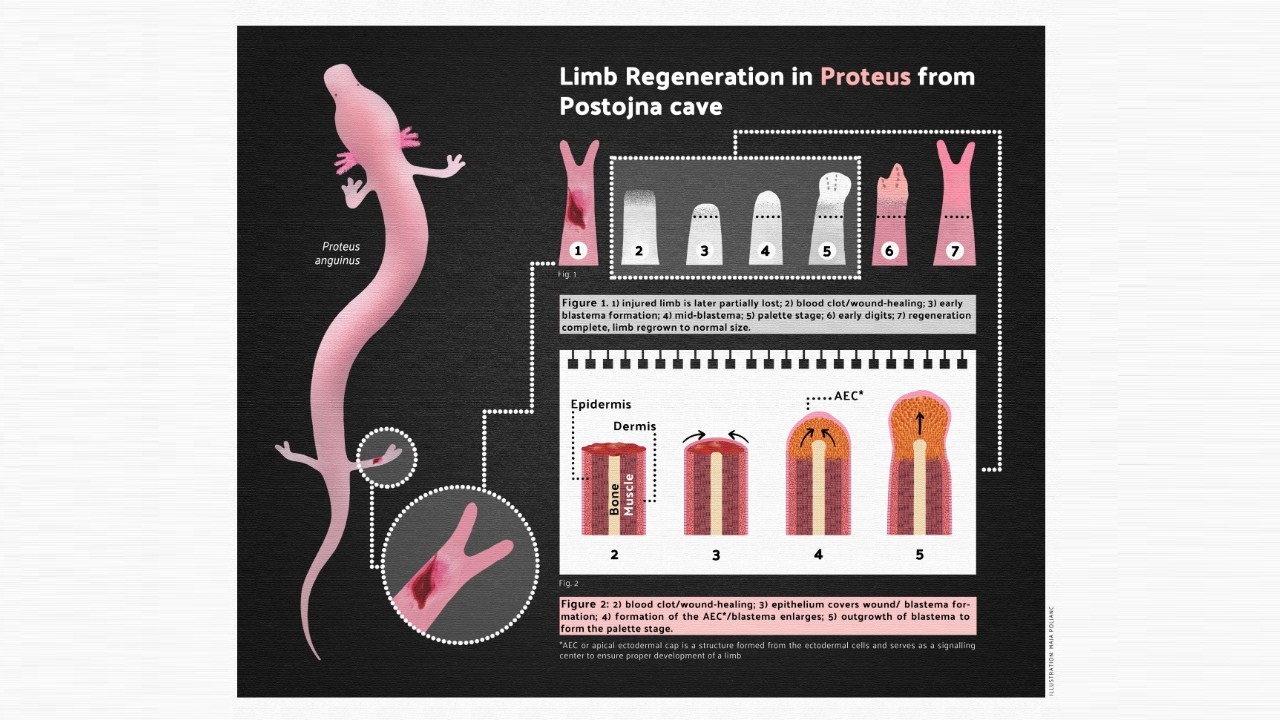What is Going on With Postojna Cave's "Baby Dragons"? Are They Still Alive?
Three years ago, the news about the hatching of Postojna Cave's olms – nicknamed "baby dragons" – travelled the world. The event was reported by the media outlets across the globe (BBC, New York Times, The Observer, Discovery Channel, CNN). And later millions of people around the world, from Tasmania to Canada, started wondering whether the baby dragons were still alive.
Everyone wanted to know about the whereabouts of Postojna Cave, the baby dragons' home, and Slovenia as well. While all the baby dragon-related happenings fired people's imagination, the world of science had the opportunity to witness baby dragons' hatching online. The chance of any olm larvae actually hatching from the 64 laid eggs and surviving was minimal: according to the scientists' statistical data, from the hundreds of eggs presumably laid by female olms during their lifetime in the wild, a mere two hatchlings live to adult age. However, in Postojna Cave we were determined to live up to our reputation of the cradle of speleobiology. We teamed up with some leading experts from this field, and the whole team's strong desire and hard work paid off, proving stronger than any scientific predictions: baby olms hatched from more than a third of the laid eggs. Everyone who had been following the baby dragons' story shared our excitement and the scientists were delighted to learn the news about no fewer than 22 hatched larvae.
In the past two years, however, there has been little news about our "baby dragons", so naturally people started asking us if the baby olms were ok. But there is no need to worry. On the contrary, everything has been perfectly fine, it's only that we have been very busy tending to the baby dragons and thus did not share how they have been doing all that often.
We set up a special subterranean laboratory for the baby olms to keep a close eye on them and monitor their progress and development under carefully controlled conditions. The larvae are extremely sensitive: they are threatened with various infections that can prove fatal. There were all sorts of things to worry about, such as how they would receive food, what their "socialisation" would be like etc. Deep in the underground world, far from the public eye, all this required constant alertness no matter the time of day. A single mistake could result in the loss of all twenty-two precious baby olms. One of the most difficult moments was when the first larva died shortly after hatching. However, today, three years later, we are happy to report that it was the only one. It is not only the embryos' extremely high survival rate (92%) that the scientists are so thrilled with, but also their rapid development. Our twenty-one baby olms are healthy. They are veritable little replicas of adult olms and will soon be on view for the first time. Under strictly defined conditions, of course.
Viktor's New Leg
There was no shortage of exciting events taking place in our aquariums over the past two years as the growing baby olms started pitting their strength against one another. After last year's clash of two of our juvenile olms, one of the two suffered some serious injuries to its rear limb. The injured olm was immediately separated from the rest, his injury was treated and then we kept an eye on it 24/7. We did everything we could to make sure the wound would not get infected with mould, as this would endanger the olm's life. When the experts were already fearing that an amputation would be needed, the unexpected happened. The injured part of the olm's leg simply fell off and, within a year and a half, our "baby dragon" named Viktor, grew a new limb. All stages were carefully recorded and photographed, so we are now able to show the public the footage showing the regeneration of the olm's leg for the first time. In a footage lasting just over a minute you can see how Viktor simply replaced the damaged leg with a new one. “Although some literature from the past reveals that olms can regenerate limbs and also the tail fin, continuous monitoring and photographing of the olm's limb regeneration has allowed us to describe the morphology and course of regeneration, which had never been done before. In fact, this is one of the first chronological descriptions of this remarkable process involving the mysterious inhabitant of subterranean waters of the Dinaric Karst,” said Dr Mali from University of Ljubljana's Biotechnical Faculty.
Her colleague, American biologist Dr Stanley Sessions described the regeneration process as "something magical, humans can’t do". This magic is largely created by stem cells. " We think that salamanders are able to turn on stem cells very very easily and this is extremely important for human medicine," he added. "It is also interesting to note that Viktor did not even bother to heal its injured leg, but simply got rid of it," said Postojna Cave's biologist, Primož Gnezda, jokingly. What is even more interesting is that, a year and a half later, the new right leg works just as fine as the left one. Viktor is a able to use it just fine and is happy ‘walking’ around the aquarium.
Relocation
In the "baby dragons' hideout" – the Postojna Cave laboratory – we have experienced some important olm-related milestones. We followed our biologist, Primož Gnezda, while he was on a special mission – the relocation of two juvenile olms to a larger aquarium. “This is a big moment for the two. By now the olms have grown so much that the containers they have been in since the hatching will soon no longer be large enough," he explained. The juvenile olms, which measured a mere 1.7 cm at the time of hatching, are now almost 12 cm in length.
“We are gradually starting to move all of them, so we will need a large number of aquariums. We hope to be able to introduce the olms to the general public soon and that everyone will have the opportunity to see these amazing animals and hear the special stories from our one-of-a-kind underground laboratory," said Katja Dolenc Batagelj, who has been in charge of the lab team from the very start.
The Postojna Cave Laboratory
The lab's contribution to understanding the olms' life is most valuable, as the fact that olms can live up to 100 years and can go without food for as long as six years is no longer the only surprising thing about them. According to scientists, Postojna Cave's one-of-a-kind laboratory represents an important step in implementing optimal artificial conditions for successful raising of Proteus in captivity,which can in the future contribute greatly to the preservation of this remarkable animal species. The team consists of the head of the laboratory, Katja Dolenc Batagelj, two Postojna Cave's in-company biologists, Primož Gnezda and Katarina Kanduč, and two outside experts, biologists Dr Stanley Sessions of Hartwick College, New York, and Dr Lilijana Bizjak Mali from the University of Ljubljana's Biotechnical Faculty, who have been following the baby olms’ progress since the first eggs were laid in Postojna Cave's large exhibition aquarium in 2016, helping us out with expert advice. This time around, Dr Sessions helped us by providing a scientific explanation of what happens during the limb regeneration process and Dr Bizjak Mali presented Viktor's story to the world's scientific public at the 20th European Congress of Herpetology, which was held in Milan in September.
Collaboration with science is of vital importance for Postojna Cave as this is a way of strengthening our reputation as the cradle of speleobiology and the world's richest cave in terms of biodiversity.


 slovenščina
slovenščina Deutsch
Deutsch italiano
italiano Hrvatski
Hrvatski français
français español
español polski
polski čeština
čeština magyar
magyar Русский
Русский Nederlands
Nederlands Português
Português 한국어 [韓國語]
한국어 [韓國語] 中国的
中国的 日本語
日本語 עברית
עברית